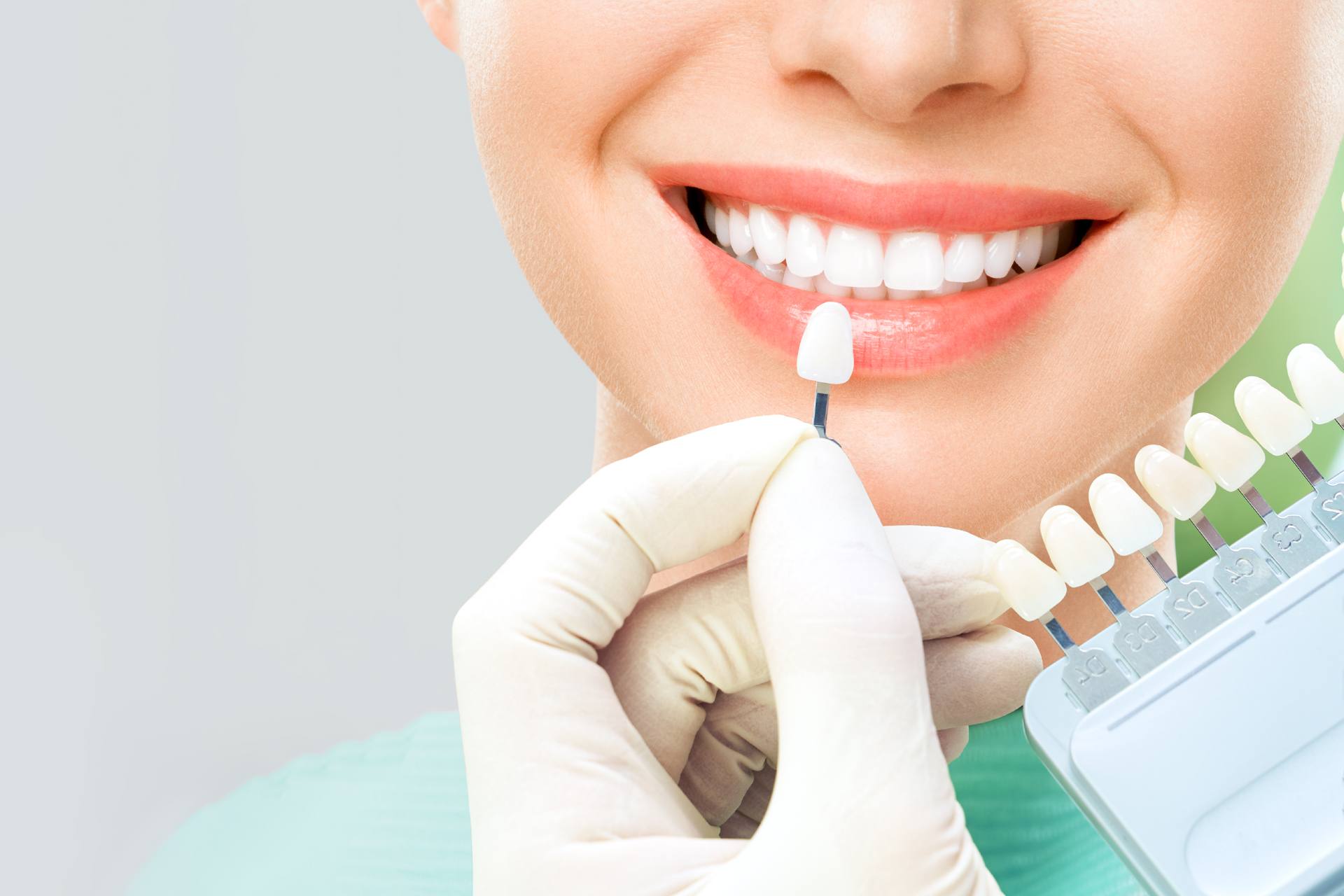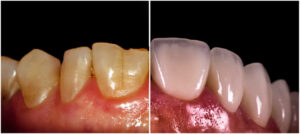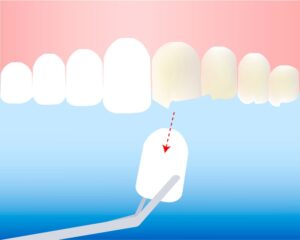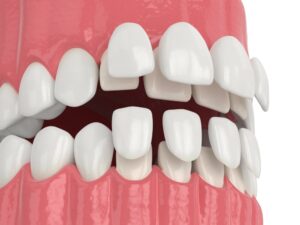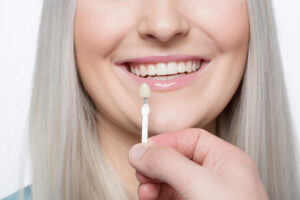Today’s article is going to be dedicated to comparing porcelain veneers vs. bonding. Bonding is another name given to composite veneers, that is, composite resin veneers. Porcelain veneers and bonding veneers are the two main types of veneers used today. So this comparison will be very useful for you. At the end of the article, we will give you a summary table with all the details on this topic. You have a high probability of becoming an expert in porcelain veneers vs. bonding.
Ready for a stunning smile transformation? Discover unbeatable veneer specials in Miami and take the first step towards your dream smile. Don’t wait, schedule now and seize this limited-time opportunity!
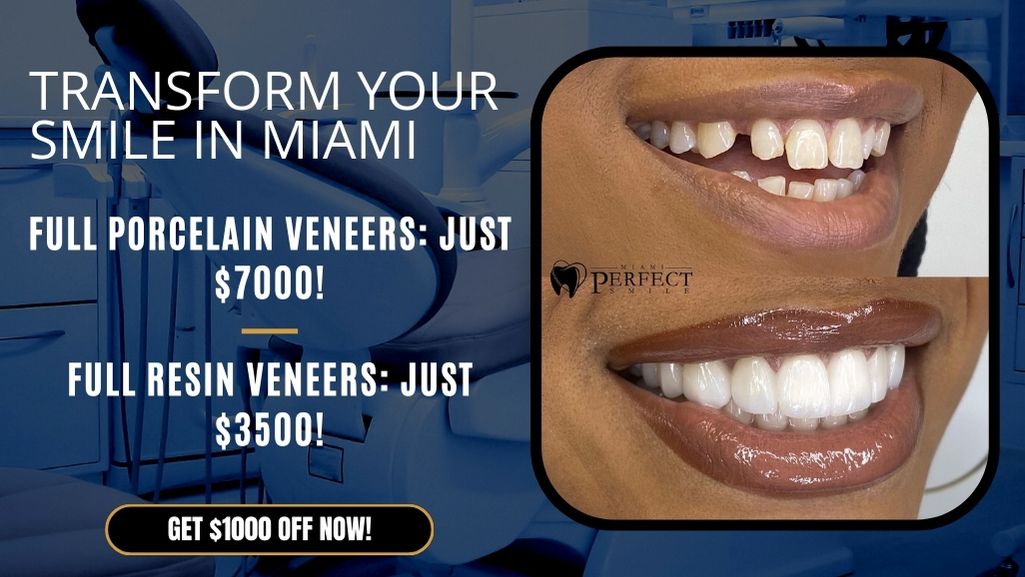
Related: Porcelain Veneers in Miami
What are dental veneers and what are they used for?
Dental veneers are a type of treatment widely used in cosmetic dentistry. The treatment consists of masking one or several teeth with sheets of some ceramic or resinous material that is very similar to the natural enamel of the teeth. The more natural the material looks, the better quality the veneers are considered. In the case of masking all the teeth that are shown when smiling or speaking, the treatment is called “smile design”. Among the utilities of using veneers, we have:
- Repair accidental or natural dental fractures or deformities.
- Correct bite defects or excess interdental separation.
- Restore dental wear caused by bruxism (teeth grinding), cavities, or by previous dental treatment errors.
- Serve as dental enamel in cases where the teeth do not have it (dental hypoplasia).
There are veneers whose placement can be temporary thanks to the fact that they do not require wearing down the natural tooth enamel. Such is the case of bonding veneers, Lumineers, or lithium disilicate veneers. On the other hand, there are veneers that do require prior wear of the tooth enamel, because it is the only way to place them and make them look good. This is the case with the vast majority of types of porcelain veneers, which in order to achieve the most natural appearance possible, must take the place of tooth enamel.
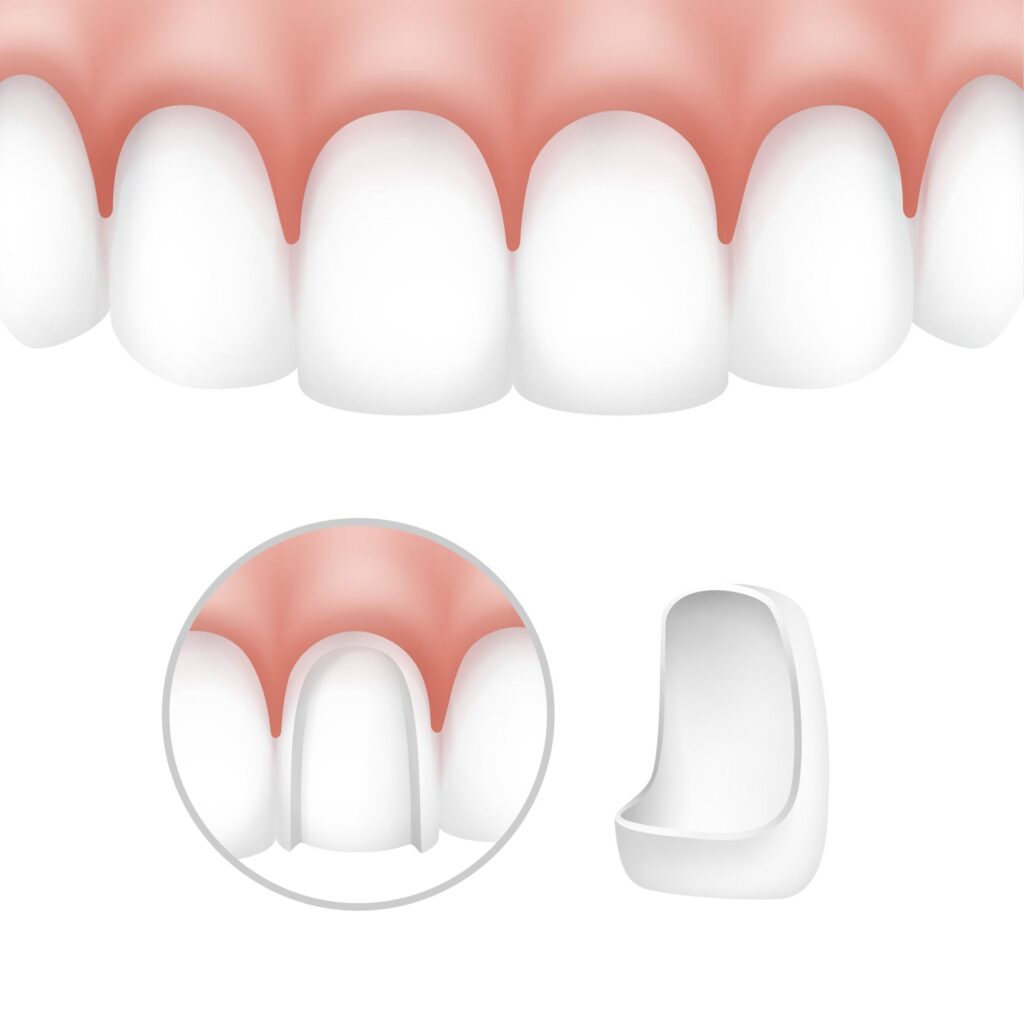
Once the tooth enamel is worn away to fit the veneers, the enamel does not regenerate, so it will be necessary to continue wearing veneers for life. That is why among the most valued qualities of dental veneers of any kind are:
- They are as thin as possible, requiring as little dental wearing as possible, or no wearing at all.
- Their ability to emulate the natural appearance of teeth.
- Their resistance or quality of not breaking during normal use of the teeth.
- Their ability to be used without changing color for as long as possible.
- Their polished and inert surface is capable of not gathering tartar, dental plaque, or infections.
- Their durability is measured in years: from 5 to 10 years for the least durable, up to 30 or more years for the most durable.
At present, dental veneers are usually grouped into two types from the point of view of their material. On one side are bonding veneers (also called composite resin veneers), and on the other are porcelain veneers. However, this does not mean that veneers of other materials do not exist or have existed, although they are used much less. For example, there are also acrylic veneers (which have fallen into disuse), nano-ceramic or nano-particle veneers (some porcelain veneers are also of this type), or Mac veneers (very resistant to stains but very short-lived).
What are bonding veneers and how are they used?
As we said at the beginning, comparing porcelain veneers vs. bonding is the same as comparing composite veneers vs. Porcelain veneers. The fact is that bonding, composite and composite resin are the different names given to these same veneers. However, despite the variety of names, throughout this article, we will only be using the term bonding to refer to composite or resin veneers.
Bonding veneers are practically the only veneers that do not require prior fabrication in a laboratory. This makes the final costs of the treatment considerably cheaper. Bonding veneers are made from resins composed of various ingredients (dimethacrylate monomers, silica, dimethylglyoxime, etc.) and are shaped on the tooth at the time of application. Finally, they are finished and polished based on a plan prepared according to the patient’s expectations, and based on previous shots of the person’s teeth and bite, obtained by means of molds, X-rays, or even computerized tomography.

It is true that porcelain veneers are usually the most used (as we will see in a later section of this article). However, this does not mean that bonding or composite veneers are not used. In reality, outside the purely aesthetic sphere, dentists use bonding to carry out numerous dental reconstruction or correction procedures with satisfactory results. New studies on the subject seem to be opening up favorable horizons in this regard.
Bonding veneers, unlike porcelain veneers or other materials that we will not analyze here, do not require prior tooth enamel wear, and that is a huge advantage. For many patients, wearing away natural tooth enamel is not even an option. And in these cases, bonding veneers are often the ideal choice, since the other option, porcelain veneers that do not require enamel wear, are much more expensive, the most expensive in fact. While treatment of 6 to 12 teeth with bonding costs between $900 and $3,000, an equivalent treatment with porcelain veneers that do not require enamel wear can cost more than $20,000.
Some of the advantages of bonding veneers can be:
- They are considerably less expensive than any other veneer, making them an ideal option for minor repairs or teeth that do not require much aesthetics.
- As the resin is made just before it is applied, and also shaped and finished at the same time, the treatment is usually completed very quickly, even in a single session.
- They do not require previous wear of the tooth enamel, so they do not constitute a permanent or irreversible treatment. The patient at any time can ask the dentist to remove the veneers and continue using their natural teeth.
- They are considered an ideal and non-invasive treatment in the event that children under 7 years of age (with deciduous dentition that will soon be replaced by the permanent one) require some type of temporary dental reconstruction or functional correction of the bite.
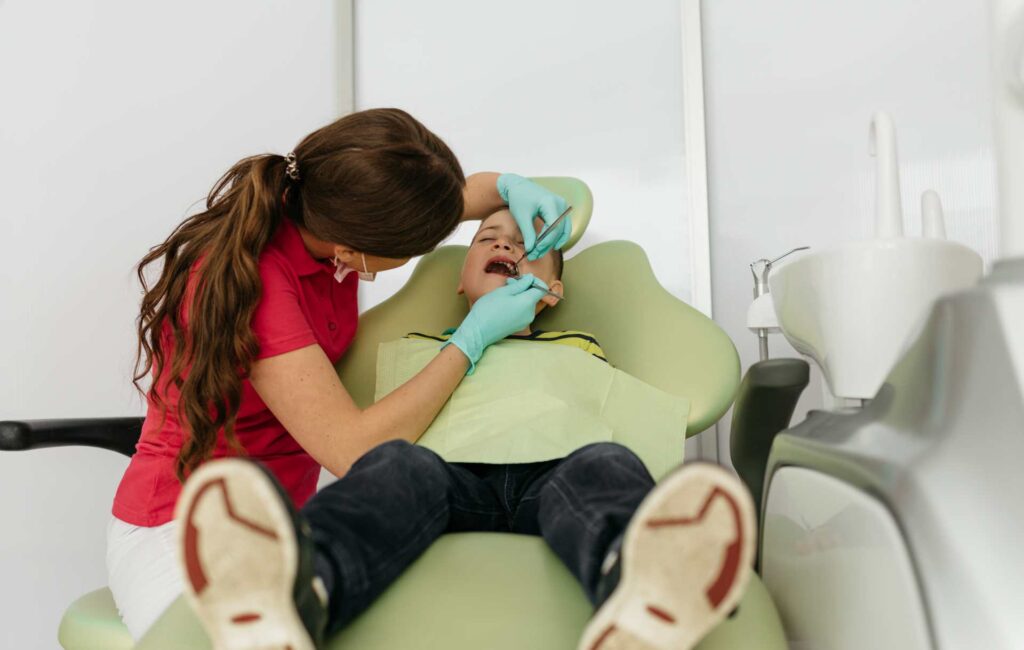
What are porcelain veneers and how are they used?
A simple Internet search for the terms porcelain veneers, and ceramic veneers, allows us to see at first glance that porcelain veneers are by far the most popular and most requested. But beyond online popularity, scientific studies also show this. Just check out the many published research articles on porcelain veneers on the official website of the National Library of Medicine , compared to the few published on bonding veneers.
An in vitro and in vivo study on porcelain veneers conducted by the Faculty of Dentistry, Oral Pathology, and Maxillofacial Surgery at the Catholic University of Leuven, Belgium, reveals that porcelain veneers have been gaining more and more popularity, due to their good aesthetics, their strong attachment to the teeth, and their quality of not causing side effects.
Porcelain veneers are of many different types, and for this reason, in one way or another, they adapt to all tastes and almost all budgets. These veneers have their porcelain base in common. But ingredients are added to this base that gives rise to porcelain veneers with very different characteristics.
We will look at the particular characteristics of each type of porcelain veneer in more detail shortly. Now looking at the characteristics in a general sense, we can say that the advantages of porcelain veneers are many:
- They achieve a high degree of resemblance to natural teeth, thanks to which other people do not notice that you have veneers (unless you tell them).
- They are very resistant. Once fitted, they can last between 15 and 30 years or more, depending on the type of porcelain veneer in question, and depending on the level of normal care that the patient has (not eating food that is too hard, not using the teeth as a tool, avoiding smoking, etc.)
- They are very comfortable to wear. They are so comfortable and adapt so well to the mouth and daily dental functions that many patients forget they are wearing them.
- Their polished, inert material is even less prone than natural enamel to collecting tartar and plaque, developing infections, or stains from food or food dyes. The material in many cases is stronger than natural enamel.
- Their thin and glazed material, and in some cases ultra-thin and translucent, allows X-ray examinations to be carried out on the underlying teeth if necessary.
- Although they are not the cheapest veneers, they are often considered an investment by patients, because they last twice or three times as long as the cheapest veneers (which are bonding).
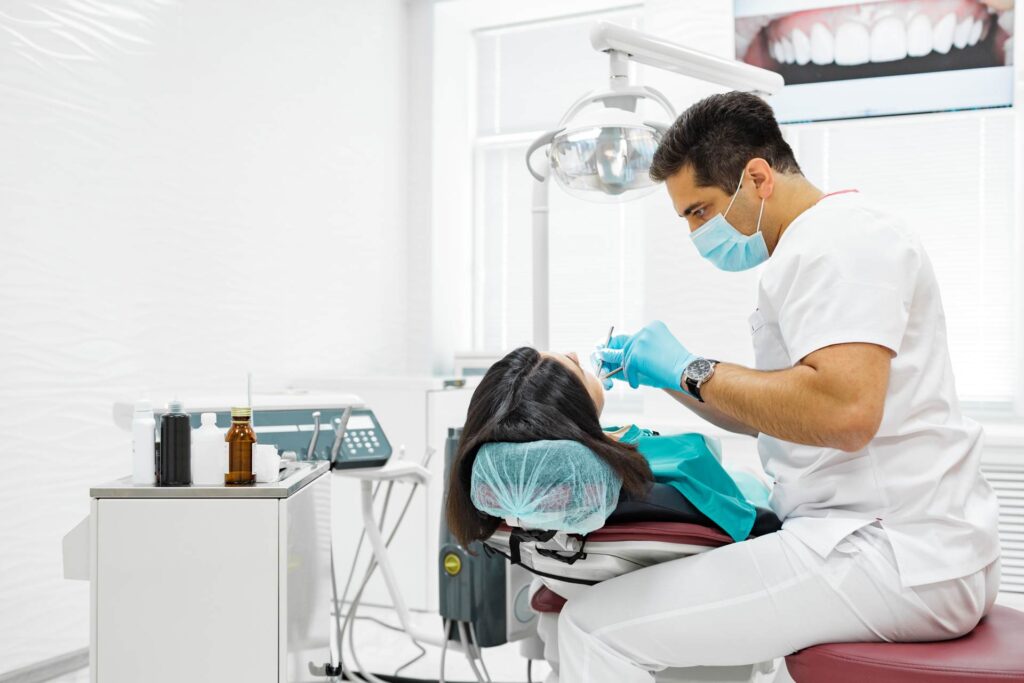
The main disadvantage of porcelain veneers lies in the irreversibility of the treatment in the vast majority of cases. Functioning as a substitute for tooth enamel, their placement requires the prior removal of a good part of the natural tooth enamel (up to 30% of the dental material is removed). In this way, they become a permanent treatment. Only a very few types of porcelain veneers do not require prior wear of the tooth enamel.
Unlike bonding veneers (which are shaped at the time they are placed), porcelain veneers are always made in a laboratory. Rarely does the dental clinic have its own laboratory? The usual thing for all dental clinics in the world that offer veneer treatments is to send them to be manufactured in an external laboratory. This is one of the reasons why porcelain veneers are more expensive and cost much more than bonding veneers.
Another factor that makes the placement of porcelain veneers more expensive and delays (the complete treatment can sometimes last up to 10 days) is that, for their manufacture, the denture, bite, and jaw are taken in the clinic, and the patient’s smile, from which anesthetic plan is drawn up and personalized porcelain veneers are prepared. After this, many hours of work are required by the technical staff of the laboratory, to manufacture the personalized porcelain veneers.
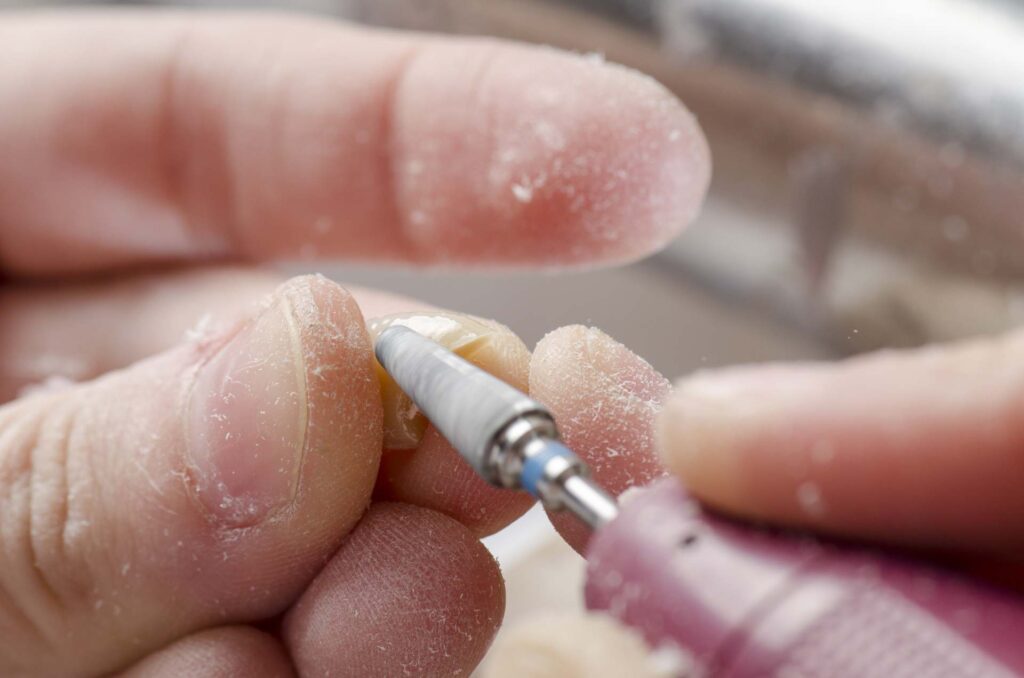
Types and brands of porcelain veneers
Porcelain veneers generally take their generic name from their composition based on some type of porcelain, which will most commonly be feldspathic porcelain. But then ingredients are added that determine notable changes in the composition and qualities of the resulting material, and that provide a more specific name to the type of porcelain veneer in question. From this point of view, it can be said that there are the following types of porcelain veneers:
1) Traditional porcelain veneers
They are made from a mixture of kaolin, feldspar, quartz, and some other chemical additives that can also be added. Their appearance is quite similar to that of natural teeth in terms of consistency, texture, and color. They are the least expensive of the porcelain veneers. Their cost usually ranges between $340 and $450 for each veneer. They last from 10 to 15 years at least, although the durability also depends on the normal care of the user.
2) Zirconia veneers
They are made from the same mixture as traditional porcelain, but zirconium (also called zirconia) is added, which is a transition metal. A minimum percentage of yttrium oxide is also added to the mixture.
Like natural tooth enamel, zirconium or zirconia veneers are translucent, thanks to which they take their color from the dentin of the teeth themselves. Due to this, sometimes the patient requires prior tooth whitening. They have an average cost of between $565 and $730 for each veneer. Typically, they last up to 20 years, but they can last longer without losing their excellent appearance. That is why zirconium, in addition to dental veneers, is used for other types of prostheses, and even for jewelry.
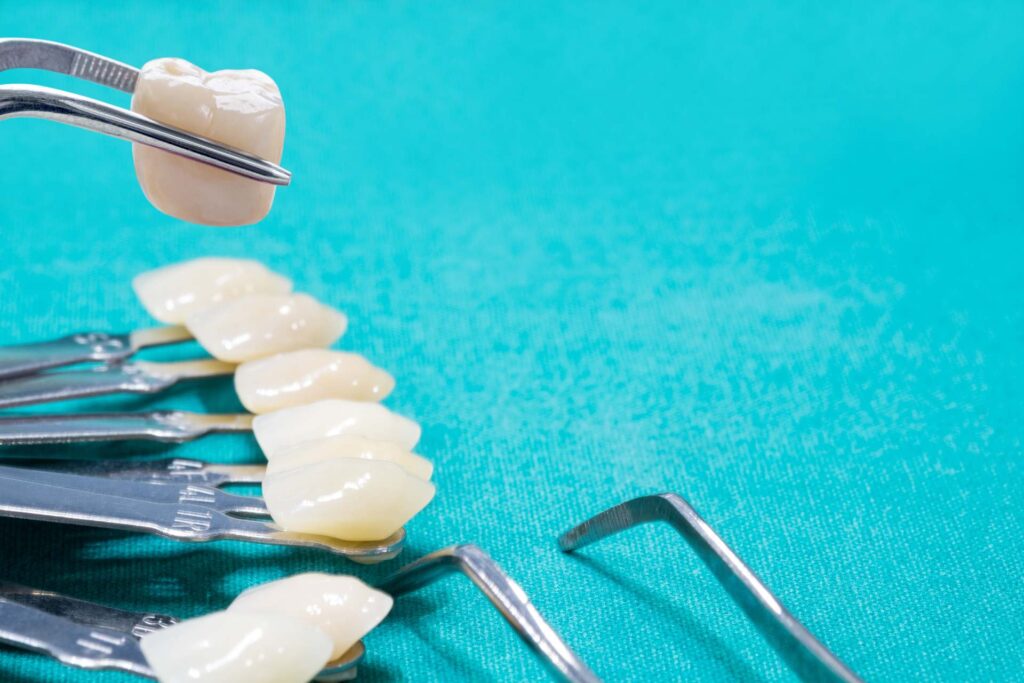
3) Lithium disilicate veneers
Lithium disilicate veneers are fabricated using a combination of LS2 lithium disilicate glass-ceramic. These veneers are 3 times stronger than any other porcelain veneers, except perhaps Lumineers (it is hard to be certain as specific strength data may vary depending on the source of information). Thanks to this, they manage to be very fine and normally do not require the prior wearing of the teeth. Its cost ranges between $565 and $790 for each veneer. They can typically last 25 to 30 years or more.
4) Lumineers veneers and other brands
There are some veneers that, although they are porcelain, are made with some special additives and are marketed under brand names. This is the case of the E-Max (Emax), the Palatal, the Componeer, the Vivaneers, the Durathin, the Lumineers, etc. Among these brands of porcelain veneers, the most famous are the Lumineers, perhaps because many Hollywood artists use them (by the way, the Lumineers factory is in California, like Hollywood).
Lumineers are made from traditional feldspar porcelain, but with the addition of leucite nanocrystals. The material of the Lumineers is called Cerinate. Currently, the Lumineers 2 are also marketed, made with Cerinate 2, which are 30% more resistant than the originals.
The new material of the Lumineers is so resistant that ultra-thin veneers (between 0.2 and 0.3 mm) can be manufactured without breaking. This avoids having to wear away the natural enamel of the teeth. Lumineers are one of the few porcelain veneers that do not require the removal of dental enamel for placement, thanks to which they can be removed at any time the user wants. They are not an irreversible treatment.
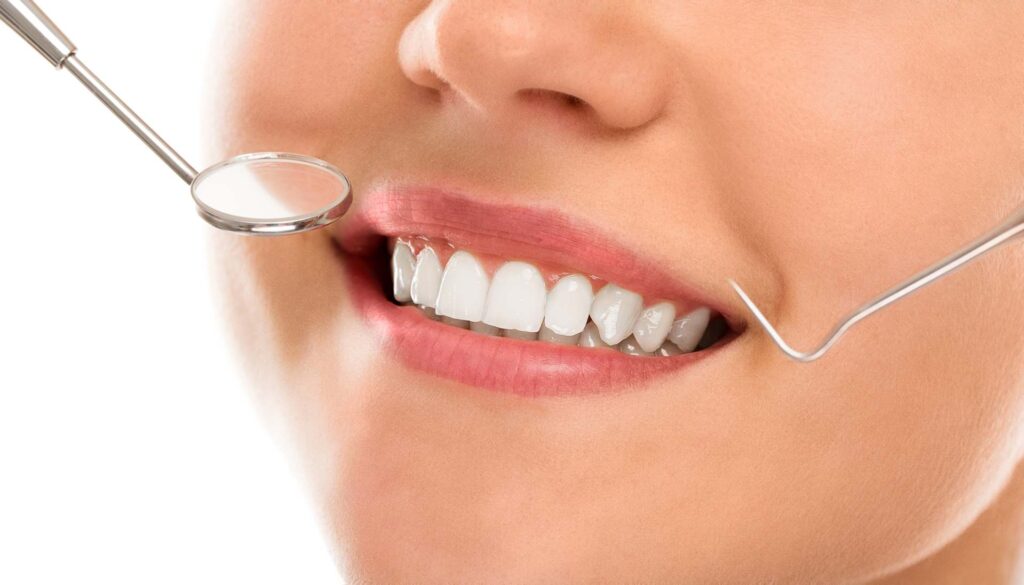
Lumineers veneers cost between $800 and $2,000 per veneer but can last up to 30 years or more. Although medical insurance does not normally cover aesthetic procedures, there are clinics that offer different types of payment facilities.
Comparison table of porcelain veneers vs. bonding
As we promised at the beginning of the article, here is a comparative table of porcelain veneers vs. bonding. When we refer to porcelain veneers in the table, we are making a generalization of all the types of porcelain veneers we have seen so far (traditional porcelain, zirconia, lithium disilicate, or even Lumineers). Prices are also an estimate or an average. The specific prices should be investigated by each person in the clinics that are available to them.
Keep in mind that the prices of dental veneer treatments, especially porcelain veneers, can change so much from one country to another and from one State to another within the same country, that many people consider the possibility of traveling to distant lands for veneer treatment. Even paying for tickets and accommodation, treatment costs can be lowered. On this topic, you can find online information and testimonials from people who have made these trips.
| COMPARATIVE TABLE OF PORCELAIN VENEERS VS. BONDING | ||
| CHARACTERISTIC | Porcelain veneers | bonding veneers |
| Price per unit, per complete set and per smile design | They cost from $340 to $790 for each veneer (the price depends on the type of porcelain veneer to be placed). A complete set costs between $2,000 and $5,000, and a smile design costs between $4,000 and $10,000. The most expensive are the Lumineers: from $800 to $2,000 each, and 24,000 for the smile design. | The cost ranges from $150 to $250 for each bonded tooth. This is not usually the most used method for aesthetics or smile design. Capping the top 6 front teeth costs between $900 and $1,500, and a full smile design costs between $1,800 and $3,000. |
| Who is a good candidate to use them (age) | They can be placed on people of any age who need to repair dental wear or trauma, or for aesthetic reasons. In practice, they are not recommended for children under 18 years of age, and they are never placed in children under 7 years of age, since the permanent dentition will replace the deciduous one, and dental problems will naturally be corrected without the need to wear down the enamel. | They can be placed in people of any age, including children or minors (with deciduous dentition). If it is necessary to place veneers in children under 7 years of age, these are the ones indicated because they are not invasive. They are also ideal for patients who do not have natural enamel, or who do not tolerate or prefer tooth wear for the placement of porcelain veneers. |
| Main advantages | Their main advantages are their resistance, their durability, their personalized appearance almost identical to natural tooth enamel, and how fast they are placed. In the case of Lumineers and lithium disilicate, they do not require the wear of the tooth enamel. | Their main advantages are the low price (up to 8 times less than the most expensive porcelain veneers), and that it is a reversible treatment since it almost never requires wearing down the natural enamel of the teeth to place them. They are also quick to put on and minimally invasive. |
| Main disadvantages | The main disadvantage is that to put them on you have to wear down the tooth enamel irreversibly (except in Lumineers, and lithium disilicate ones in some cases). Their high price, or very high in some types, can also be seen as a disadvantage. | Their main disadvantages are their short duration, their coloration is not identical to natural enamel, and their vulnerability to chemical substances and food dyes, which over time can cause a darkening of the bonding and reduce aesthetics. |
| Aesthetics and conservation | Their color is almost identical to that of natural teeth. They do not lose their shine or darken over time. Those around you do not notice that you are wearing veneers, especially if they are highly aesthetic, such as zirconium veneers, which are translucent and take on the color of natural dentin, or Lumineers, which are semi-translucent. | Their color is not 100% identical to natural dentin from the start. Normally those around you can begin to notice that you are wearing them when the bonding material darkens or changes color over time, or due to the action of certain foods or food dyes. They can be detached spontaneously. |
| Manufacturing and ingredients | They are manufactured with porcelain in the laboratory, for which personalized samples of the patient’s teeth are previously taken and a previous design is made according to their expectations. Traditional porcelain is usually made from kaolin, feldspar, and quartz. But depending on the type of veneer, ingredients such as zirconium, LS2 lithium disilicate glass, leucite nanocrystals, etc. are added. | They are made from a mixture of resins at the time of placement, although samples of the teeth are previously taken. They are shaped as they are laid before the mixture dries. Finally, they are given a finish and a polish. Resin or bonding ingredients may include Bis-GMA and other dimethacrylate monomers (TEGMA, UDMA, HDDMA), silica, a photoinitiator, and dimethylglyoxime. |
| Placement time | They are placed one by one on the corresponding tooth according to a previous design. This placement, with few exceptions, is done during 1 or 2 sessions in the dental clinic. The fabrication of the veneers can take up to 10 days. Porcelain veneers that do not require enamel wear go on much faster. | The bonding or composite resin is applied to each tooth, and it must be shaped at the time and polished at the end. If several teeth are to be covered, more than one session in the dental clinic may be needed. Otherwise, the treatment can be completed very quickly, usually in a single session. |
| Need to grind teeth | They require the tooth enamel to be worn down to look natural, so they are considered an irreversible treatment. The finer the veneer, the less tooth wear is required. Lumineers and lithium disilicate do not require tooth wear. | They are generally considered a reversible treatment. Normally, they do not require any type of tooth wear to place them (and therefore no anesthesia is needed). But there are exceptional cases in which a minimum of tooth wear is required. |
| Durability | Depending on the type of porcelain veneer, the durability is from 15 years (traditional porcelain) to 30 years (Lumineers and lithium disilicate), if the same care and hygiene measures are followed as for a natural denture. | The usual thing is that they last between 5 and 7 years, if the normal care and hygiene measures are followed and if you visit the dentist at least once a year. The most advisable thing is to make 2 annual visits to the dental clinic for revision. |
| Consistency and adherence | Depending on the type of porcelain veneer, they are either slightly brittle or not brittle at all (zirconium, lithium disilicate, Lumineers). If they are not subjected to strong bites or misuse, they do not usually break. Its level of adhesion depends on the quality of the glue. | They are usually less brittle than porcelain. But the composite does not have the same level of adhesion to the teeth as porcelain veneers and can come off spontaneously. Its initial adhesion level depends on the composition and quality of the resin. |
| Resistance to aggressive external agents | All-porcelain veneers are highly resistant to common substances such as citric acid, alcohol, antibiotics, or mouthwashes. They are even more resistant than natural enamel. | They are not very resistant to chemical attacks and common substances such as citric acid, alcohol, coffee, tea, antibiotics, or mouthwashes or mouthwashes, which can change their color. |
| Comfort level when wearing them | They are highly comfortable, to the point that the patient forgets that they are wearing them. But at first, they can bother a little due to dental sensitivity caused by the wear of the enamel (in cases where it is required). | They are usually comfortable and do not cause tooth sensitivity because they do not require wear. Some patients may feel that they have an addition on their teeth, but others do not experience that strangeness at all. |
| Biological reactivity and hygiene | Their surface is highly smooth and polished, and their composition is inert, so it does not trigger biochemical reactions in the mouth. They tend not to easily retain tartar or plaque. They are even more hygienic than natural tooth enamel. | Normally their chemical composition does not trigger biochemical reactions in the mouth. If they are well polished when put on, their surface retains tartar and plaque to about the same extent as natural tooth enamel. |
| Follow-up after placement | Normally they do not require any medical follow-up, although it is recommended to visit the dentist according to the normal frequency. | Although they do not require medical follow-up, 1 or 2 annual visits to the dental clinic for check-ups and supervision are recommended. |
| Radiopacity (sensitivity to X-rays) | Their density is very similar to that of natural enamel, which allows the underlying teeth to be easily explored using X-rays. This is especially true for zirconium or Lumineers because they are translucent. | Being made of a slightly denser material than porcelain veneers, they are less able to allow X-rays to pass through to the tooth. But that doesn’t mean teeth can’t be examined. If necessary, they can be removed. |
